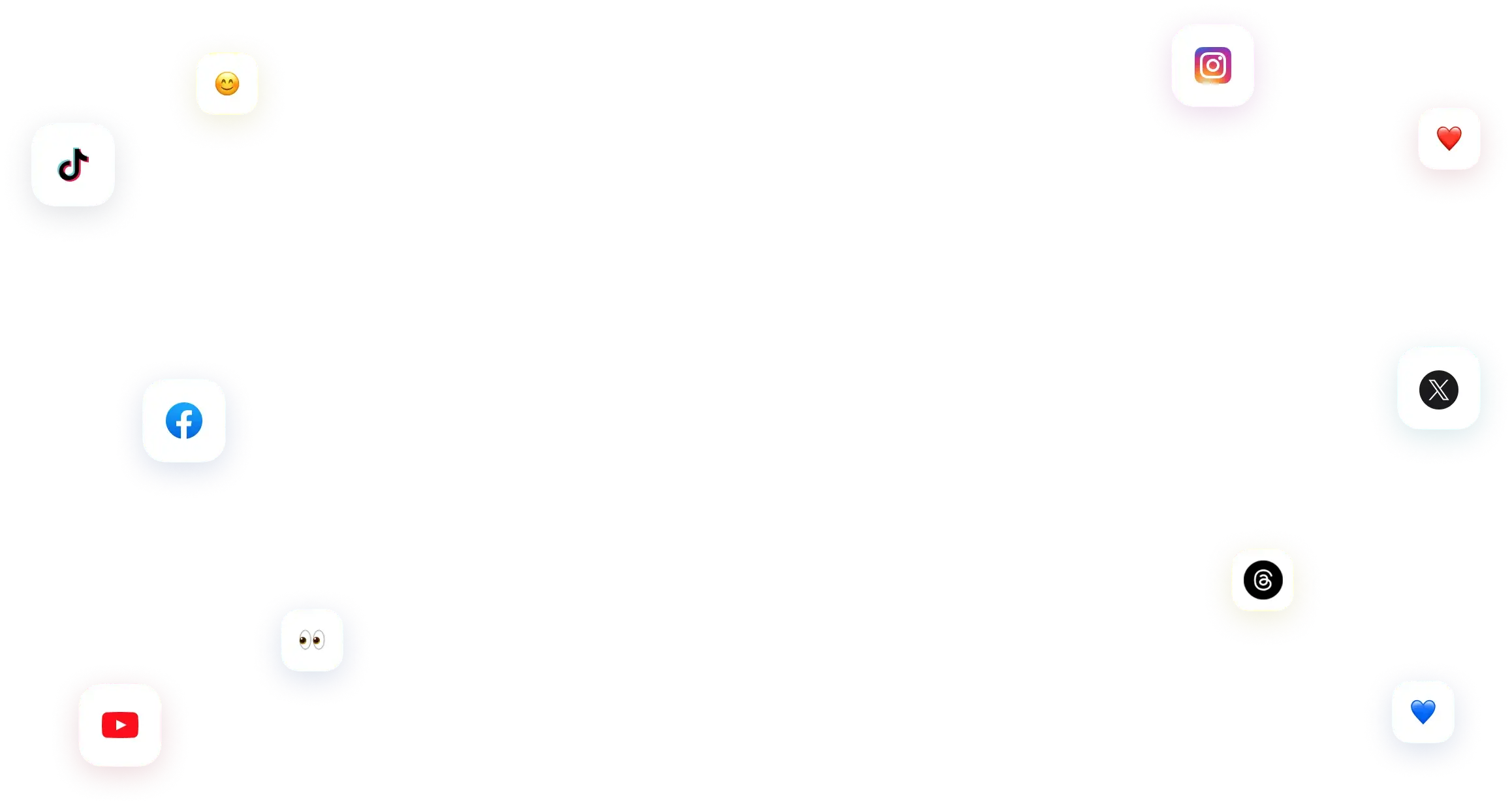
AI for Content Marketing: Triple Your Creative Output
AI for content marketing refers to integrating artificial intelligence technologies into the content creation and distribution process.

Top Benefits of Employee Advocacy: w/ Tips
Employees advocating for your brand can act as social proof—encouraging people to buy your products or join your company because others do.
New

How to Choose the Best Social Media Platform for Your Brand
Unlocking your brand’s full potential starts with choosing the right social media platform!
5 Ways to Improve Your Brand’s DEI (Diversity, Equity & Inclusion)
Updated on July 17, 2023
5 min to read
Content Writer
Published February 7, 2022


Content
Share

Today, it is not enough for a brand to be remarkable and make bright, memorable campaigns. The audience expects from companies at least a clear position on current social issues, and at most — active participation in their solution. Inaction and silence are no longer options for companies. The lack of a formulated position on a specific issue can damage the brand, especially when it comes to acute problems.
According to Sprout’s Social report, 70% of consumers say it is essential for brands to take a public stance on social issues. Millennials and Generation Z pay the most attention to this moment. They insist that the company’s involvement in the life of society plays a crucial role for buyers when choosing a product.
Whether it is a Black History Month, Pride Month, or Women’s Equality holiday, brands should go beyond a one-time statement online. Diversity, equity, and inclusion should be built-in in your social strategy. Sure thing, organic integration of social issues into your marketing is a real art. So let’s dive into the topic and see how your brand can approach it.
Table of contents
Define Your Brand’s Social Role
We live in a world where it is no longer interesting just to make money. So, offering a product or service, we also give a goal-setting, which says that our product is about important things.
The social role is goal setting. If you look at large brands, you can see that they, as a rule, build their social roles around a few themes: ecology, acute social issues, support for those in need. Still, brands need to stay sincere, trying to match the trend for social responsibility. So before developing your brand’s position, analyze if it corresponds with your business values.
When talking about any social issue, you should think about your brand’s role in the specific situation and what your audience expects from you. Then, ask yourself if your company can answer your audience’s questions and support those in need.
That is fine not to be an expert in a particular social issue. Still, you can express your opinion and concentrate on sharing helpful resources. Moreover, think about how the problem is related to your target audience to create resonating content.
For example, Nike declares its support for the Black Lives Matter movement and appeals to the audience to unite in the fight against racism.
Although many brands tried to copy this campaign in tone and style, and even Adidas retweeted this message, Nike’s posts turned out to be one of the most authentic brand reactions to the situation.
Evaluate Representation in Your Social Campaigns
When working on social goals, pay attention to the demographics of your customer base. Then, you can see who is not represented in your social media content and fix that.
Let’s take the fashion world, which is ready for change despite conservatism. The phenomenon of nodels — models of various ages, with very different figures and looks — has been trumpeted by fashion publications for a few years already.
Conventional beauty, youth, unnatural thinness, and body parameters that most people are far from – this becomes a thing of the past. Well, sometimes society still finds it difficult to accept the idea that clothes can be shown not only by white and skinny girls or boys. Nevertheless, some fashion brands stick to the mission of inclusivity, body positivity, and representation.
For example, in recent years, the fashion brand Victoria’s Secret has changed the philosophy of its own brand and started inviting new models for the shows. The brand now actively shows models of different nationalities and hires models plus-size. They are going in the right direction and listening to their audience, which has long wanted to see more women of different body shapes and sizes.
Now a variety of shapes, sizes, heights, colors, and ethnicities are presented on the podium, and this leads to a more understandable meaning of what it means to be a model.
Show Your Brand’s Ongoing Work
The values and social mission of the brand should not be created artificially. Instead, they should reflect the business’s mission, genuinely captivate you and your employees, and meet customers’ expectations.
Try Vista Social for Free
A social media management platform that actually helps you grow with easy-to-use content planning, scheduling, engagement and analytics tools.
Get Started NowYou can tell your audience about new diversity goals or whatever they want to hear, but it is essential to show your brand doing what you promised. Social media strategy is where you should emphasize your ongoing work.
For example, the Annmarie Skin Care cosmetics brand promotes an eco-friendly lifestyle. Educational content is available to the participants of the brand loyalty program: e-books, articles, and videos about organic products and responsible consumption.
Clients receive content in various channels: emails, closed Facebook groups, and more. The brand promotes its mission by educating customers and creating its own community of like-minded people (brand community). In addition, the brand shares their work details to the audience through social media to show their actions on how they are involved.
Keep an Eye on Yourself
When a brand stands out for diversity, equity, and inclusion, all these principles should be brought into your brand’s work. The company’s values on various social issues are not just a set of rules but also tools that the brand applies in practice. If an organization does not adhere to its own beliefs, consumers notice it, which leads to a loss of trust and a decrease in sales.
Before publishing any content, think about if it is acceptable in terms of diversity, equity, and inclusion. You will agree that it will look strange if the content lacks diversity, but you will continue to add new and new statements about these social issues in your social media posts.
Before publishing the content:
- Ask yourself if the content includes any elements of a marginalized culture and if you are using any insensitive language.
- If you make a mistake, your audience will address the issue. Be ready for that!
- Accept it with understanding and analyze your work to make proper improvements.
Understand the DEI Landscape Within Your Company
Diversity in advertising helps brands synchronize with their audience’s values and attract new ones. The values themselves are also changing. For example, women want models at fashion shows or commercials to be like them and not embody an unattainable ideal.
Sometimes diversity, equity, and inclusion are used as a tool to whiten a brand’s reputation quickly. Sometimes it works, but not for long: the audience soon feels it. Therefore, it is essential to be sincere — if the brand wants to adhere to the principles of diversity, it needs to always keep these characteristics in mind and in everything, not just in advertising or one-time promotions.
Focusing on your internal representation is very important. What you say and do should correspond to your brand’s mission.
Asking the following questions will help you understand the focus of your company:
- What are the main areas of the DEI strategy within your company?
- Were there any responses from your customers regarding the social issues and your social efforts?
- How is your brand represented on social media today, and what can be improved/changed?
Answering these questions, you will better understand how to develop a long-term strategy for DEI.
Conclusion
Brands have become more than just a store of goods and services in the modern world — they have become part of society. Each of them has its credo and mission, and the interests of the target audience become part of their communication. Follow these five tips to create a long-term social marketing strategy that emphasizes diversity, equity, and inclusion.
Managing social accounts is a matter of a few clicks with Vista Social. It is a powerful all-in-one social media platform that allows you to achieve the results you did not think were possible. Easy-to-use features like publishing, engagement, reports, or listening will cover your social media management needs with no hassle. Get started now!
About the Author
Content Writer
Never Miss a Trend
Our newsletter is packed with the hottest posts and latest news in social media.

You have many things to do.
Let us help you with social media.
Use our free plan to build momentum for your social media presence.
Or skip ahead and try our paid plan to scale your social media efforts.
P.S. It will be a piece of cake 🍰 with Vista Social
Subscribe to our Newsletter!
to stay updated on the latest and greatest Social Media news
We promise not to spam you!





